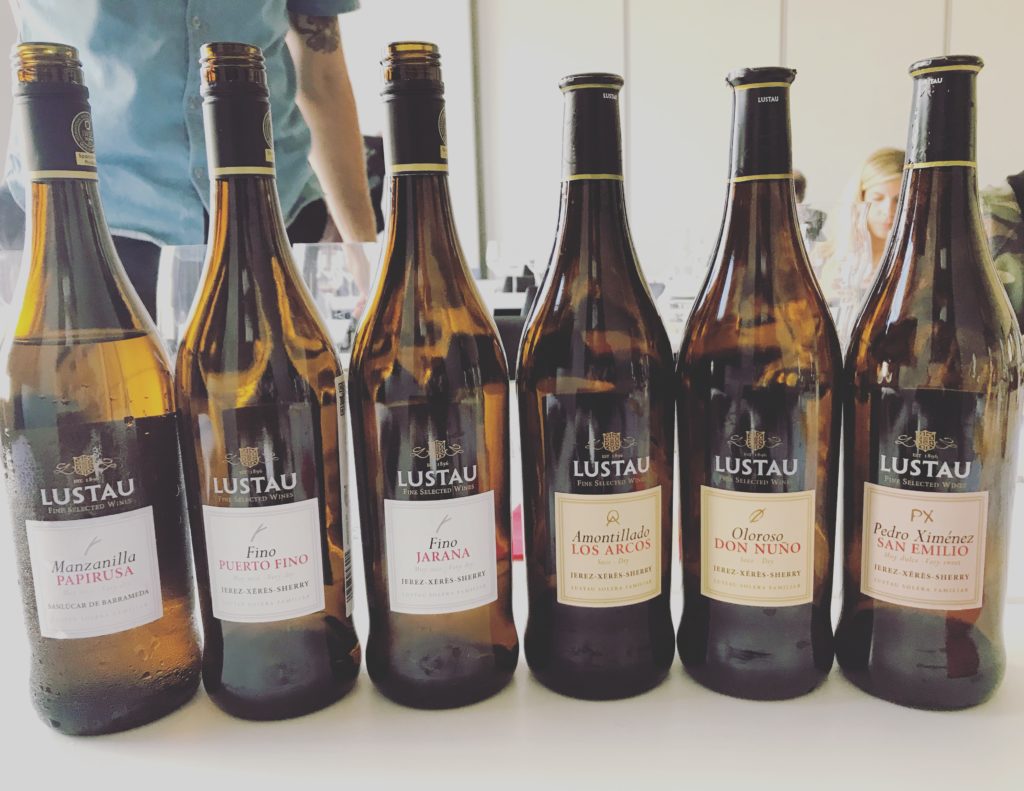In my early 20s, I once brought a bottle of Lustau’s “East India Solera” Sherry to a house party – and to sincerely enjoy it while sharing recent revelations on the tipple rather than for its elevated alcohol. I’ve slowly started to bring less and less esoteric things to these types of shindigs and my choices have devolved from cool sherries to anonymous six-packs.
Stumbling upon Lustau’s Certified Sherry Wine Specialist course, I couldn’t not awaken a category I’ve put on hold, especially after a recent hoo-ha at work involving a Manzanilla that everyone hated but which I gladly paired with a Saturday morning American Horror Story binge. Within the past few years, the fortified wines from the southwestern corner of Spain have shed their reputation for drinks that only grandmas consume (and no seminar on sherry is complete without any mention of this), and they’ve graduated from unfashionable status to hipster status, and with newer energy flowing through their soleras.
Especially intriguing was the comparison of three biologically-aged sherries (that is, aged under a protective veil of yeast rather than oxidatively aged like the latter three), produced on each corner of the sherry triangle. Post-research seemed to fit my notes: the one produced in Sanlúcar de Barrameda (and is thus worthy of the “Manzanilla” designation) was the most aromatic, elegant, and bizarre; the fino produced in El Puerto de Santa Maria had more of a precise briny nuttiness; and the fino from Jerez de la Frontera had an edge on fruit and broadness.
Combined with the gradual intoxicating caramelized gradient of the last three, I might have to start bringing sherry to parties again.

Lustau “Papirusa” Manzanilla (Jerez, Spain) Nov 2017.
Produced in Sanlúcar de Barrameda, enabling the Manzanilla designation over Fino. The most aromatic and light of the three biologically-aged sherries. Comparatively floral, with yeast, cream, green almonds, and minerality, along with a curious hint of something meaty like soy sauce. A curious hint of coffee wafer. Dry, as per the style, with a long and nutty meatiness to the palate. So savoury and so delicious. Definitely one of today’s favourites.
Lustau “Puerto Fino” Fino (Jerez, Spain) Nov 2017.
Produced in El Puerto de Santa Maria. The almond character takes more of an anchor here compared to the Manzanilla – it’s all salted almonds with hints of green olive and seaweed. Really mouth-enveloping with an echo of the nuttiness in the middle. Intense raciness and minerality on the palate.
Lustau “Jarana” Fino (Jerez, Spain) Nov 2017.
Produced in Jerez de la Frontera. The broadest and the least aromatic of the first three wines, with more of a salted apple character. The palate still has the raciness of the first two but it joins bruised apple and some tones of citrus.
Lustau “Los Arcos” Amontillado (Jerez, Spain) Nov 2017.
The pale lemon colour of the first three turns into amber, here, and there’s a mouthwatering marriage of salted lemon peel and caramel, with undertones of burnt sugar and hazelnuts. One of the most intense of the range, still retaining its finesse despite the step up in alcohol content.
Lustau “Don Nuño” Oloroso (Jerez, Spain) Nov 2017.
The Oloroso fully commits to the caramelized notes that the Amontillado leaned towards, with a nose full of caramel, walnuts, chocolate, and bakeries. Maple and dried fruit replace lemon peel, and the palate is full and intense. I can’t not swallow this.
Lustau “San Amilio” Pedro Ximénez (Jerez, Spain) Nov 2017.
A sticky brown. Liquid raisins and figs. The word “decadence” is a bit overused with wines like these, but it’s the word that really summarizes this. The hint of earth is clearer on the palate. Supremely mouth-coating and soft, with hints of bitterness to balance out the, well, decadence. 417 g/L residual sugar.